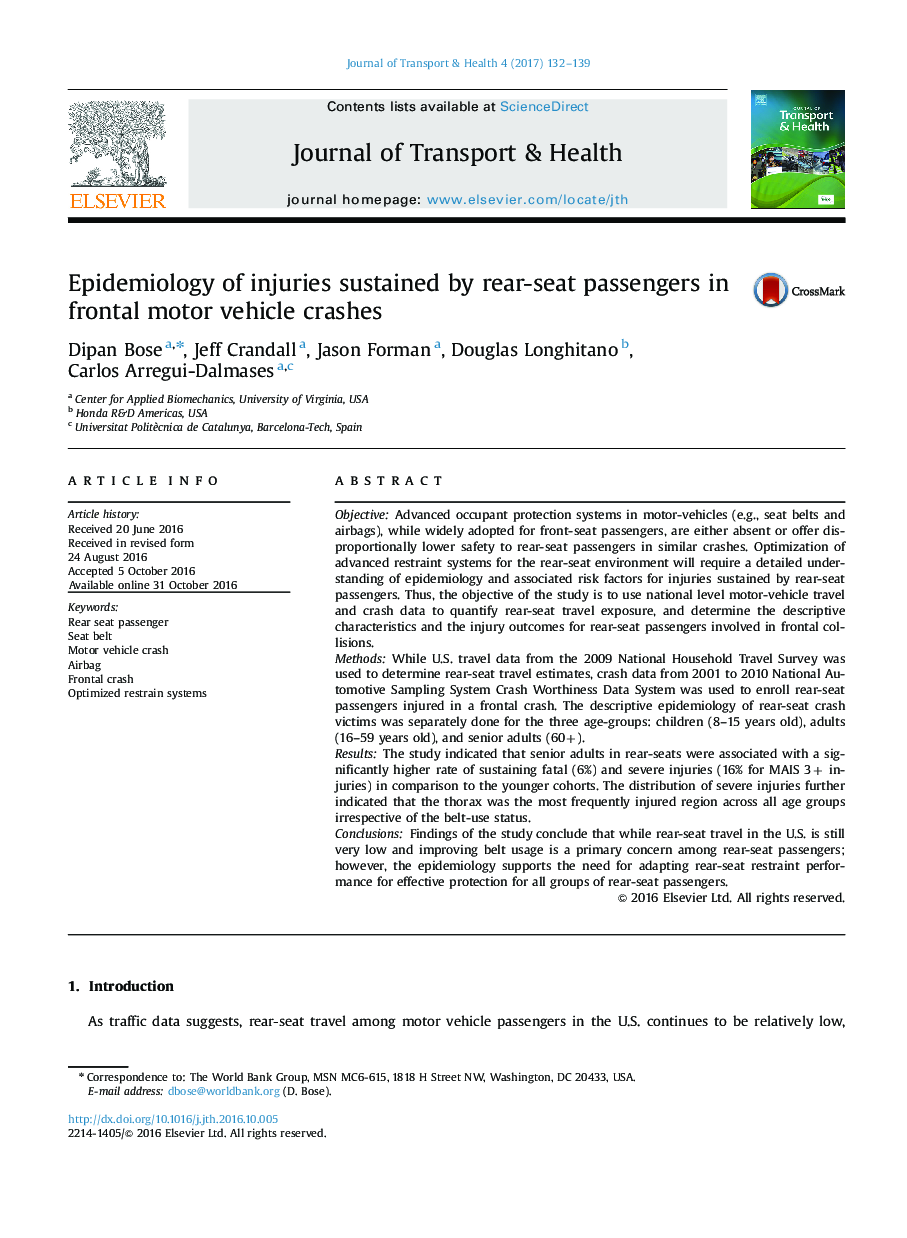| کد مقاله | کد نشریه | سال انتشار | مقاله انگلیسی | نسخه تمام متن |
|---|---|---|---|---|
| 5117867 | 1485457 | 2017 | 8 صفحه PDF | دانلود رایگان |
- Thoracic injuries among rear-seat passengers is considerably higher than the front row counterparts.
- The senior adults in the rear-seat, in spite of their relatively higher belt usage rate, are significantly more vulnerable to serious injuries and fatalities in comparison to the younger age cohorts.
- It is necessary to adapt the existing restraint features to accommodate the priorities for the rear-seat occupant.
ObjectiveAdvanced occupant protection systems in motor-vehicles (e.g., seat belts and airbags), while widely adopted for front-seat passengers, are either absent or offer disproportionally lower safety to rear-seat passengers in similar crashes. Optimization of advanced restraint systems for the rear-seat environment will require a detailed understanding of epidemiology and associated risk factors for injuries sustained by rear-seat passengers. Thus, the objective of the study is to use national level motor-vehicle travel and crash data to quantify rear-seat travel exposure, and determine the descriptive characteristics and the injury outcomes for rear-seat passengers involved in frontal collisions.MethodsWhile U.S. travel data from the 2009 National Household Travel Survey was used to determine rear-seat travel estimates, crash data from 2001 to 2010 National Automotive Sampling System Crash Worthiness Data System was used to enroll rear-seat passengers injured in a frontal crash. The descriptive epidemiology of rear-seat crash victims was separately done for the three age-groups: children (8-15 years old), adults (16-59 years old), and senior adults (60+).ResultsThe study indicated that senior adults in rear-seats were associated with a significantly higher rate of sustaining fatal (6%) and severe injuries (16% for MAIS 3+ injuries) in comparison to the younger cohorts. The distribution of severe injuries further indicated that the thorax was the most frequently injured region across all age groups irrespective of the belt-use status.ConclusionsFindings of the study conclude that while rear-seat travel in the U.S. is still very low and improving belt usage is a primary concern among rear-seat passengers; however, the epidemiology supports the need for adapting rear-seat restraint performance for effective protection for all groups of rear-seat passengers.
Journal: Journal of Transport & Health - Volume 4, March 2017, Pages 132-139
